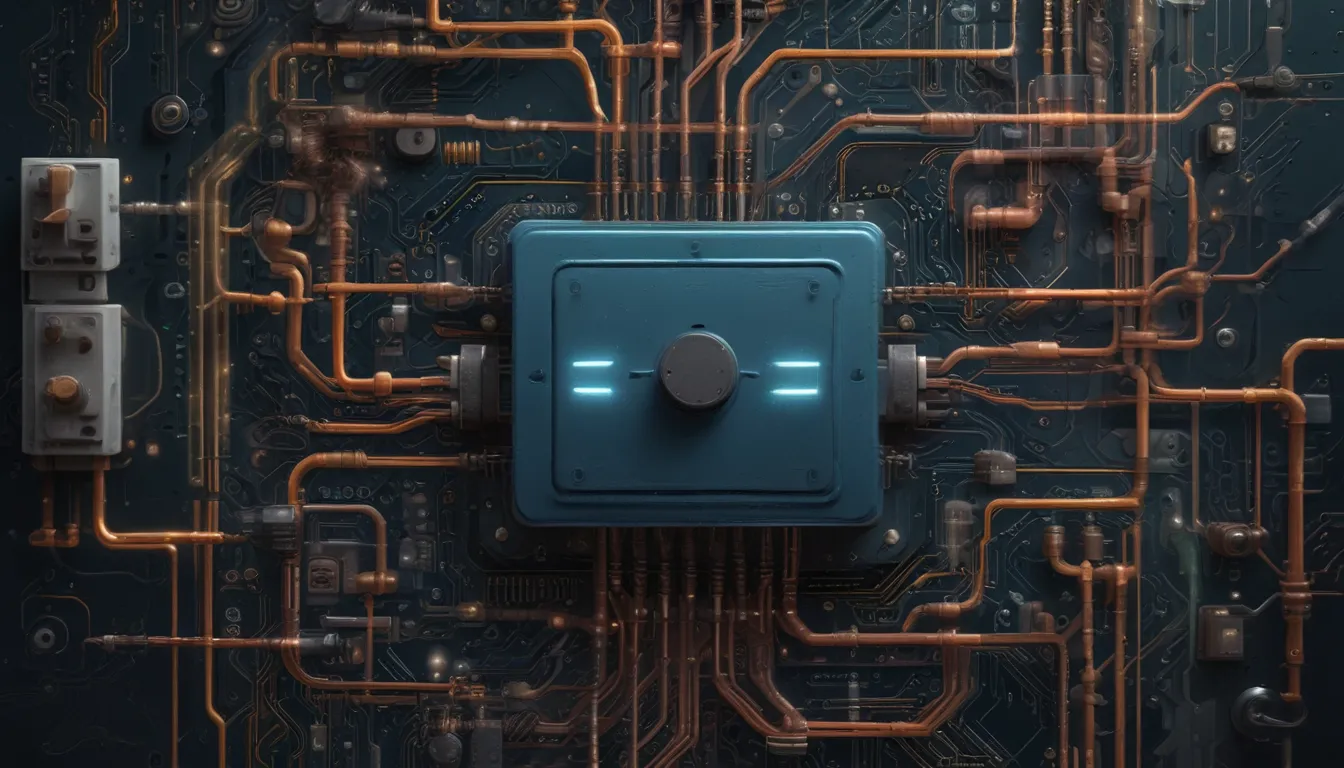A Note About Images: The images used in our articles are for illustration purposes only and may not exactly match the content. They are meant to engage readers, but the text should be relied upon for accurate information.
Electric circuits are the unsung heroes of modern technology, silently powering our world with their intricate network of wires and components. From the simplest household devices to the most advanced technological innovations, electric circuits play a pivotal role in shaping our daily lives. Whether you’re a curious soul or a seasoned tech enthusiast, delving into the realm of electric circuits can be both enlightening and inspiring. In this article, we’ll explore 19 captivating facts about electric circuits, shedding light on their history, functionality, and impact on society. So, fasten your seatbelts as we embark on an electrifying journey through the mesmerizing domain of circuits.
The Essence of Electric Circuits: Powering Our World
Electric circuits serve as the lifeblood of modern technology, fueling a wide array of devices and systems that define our era. From the humble light bulb to the sophisticated spacecraft systems, electric circuits enable the seamless flow of electrical energy, shaping our world in ways we often take for granted. Their versatility and indispensability underscore their significance in driving progress and innovation across various industries.
Unveiling Key Takeaways
- Electric circuits serve as the backbone of technological advancements, powering everything from household gadgets to groundbreaking innovations in healthcare, transportation, and beyond.
- Understanding the principles of electric circuits is essential for anyone interested in technology, engineering, or science, offering a glimpse into the intricate workings of these essential systems.
A Glimpse into the Intriguing World of Electric Circuits
Let’s dive into the fascinating realm of electric circuits, unveiling 19 captivating facts that highlight their historical significance, functionality, and impact on our daily lives.
Electricity: The Driving Force
Electricity is more than just a convenience; it’s a fundamental aspect of our existence, permeating every facet of our daily lives. From illuminating our homes to powering our smartphones, electricity powers the very essence of modern civilization. This universal reliance on electricity underscores the critical role of electric circuits in channeling this essential resource to homes, businesses, and industries.
The Catalyst for Innovation
Innovations in electric circuits have sparked revolutions in various industries, propelling advancements in telecommunications, healthcare, transportation, and entertainment. These breakthroughs have paved the way for cutting-edge electronic devices, life-saving medical equipment, efficient transportation systems, and immersive multimedia experiences that enrich our lives.
Versatility at its Core
Electric circuits exhibit remarkable versatility, adapting to a myriad of applications ranging from simple household appliances to complex spacecraft systems. Whether it’s powering a toaster or fueling a spacecraft, electric circuits play a pivotal role in enabling the seamless flow of electrons that drive our modern world forward.
The Dance of Electrons
At the heart of every electric circuit lies the mesmerizing dance of electrons, the carriers of electric charge that bring circuits to life. This intricate movement of electrons within the circuit is crucial for the transmission of electrical energy, allowing devices to operate as intended with precision and efficiency.
Decoding DC vs. AC
Electric circuits can be classified into two primary types: direct current (DC) and alternating current (AC). While DC circuits maintain a steady flow of electric charge in a single direction, AC circuits switch the direction of the electric current at regular intervals, offering unique advantages in different applications.
Unveiling Ohm’s Law
Ohm’s Law stands as a fundamental pillar in electrical engineering, delineating the intricate relationship between voltage, current, and resistance in an electric circuit. This foundational principle serves as a guiding light for engineers, aiding in the analysis and design of circuits to optimize their performance and efficiency.
Navigating Series and Parallel Configurations
Electric circuits can be arranged in series or parallel formations, each offering distinct advantages in circuit design. Series circuits feature components linked end to end, forming a single path for current flow, while parallel circuits provide multiple pathways for current distribution, catering to diverse application needs.
The Heart of Circuits: Components Galore
Resistors, capacitors, and inductors stand as the fundamental building blocks of electric circuits, each playing a unique role in shaping circuit functionality. Resistors regulate current flow, capacitors store electrical energy, and inductors generate magnetic fields, synergistically contributing to the circuit’s operation with precision and finesse.
Safeguarding Circuits with Protection Devices
Circuit protection devices such as fuses and circuit breakers act as stalwart guardians against electrical overloads, preventing damage to circuits and connected devices. These safety mechanisms step in to halt the flow of current upon detecting anomalies, ensuring the integrity and longevity of the circuit.
The Backbone of Electronics: Printed Circuit Boards
Printed circuit boards (PCBs) serve as the sturdy foundation for mounting and interconnecting electronic components, forming the backbone of modern electronic devices. Their compact design and efficient layout allow for the seamless integration of complex circuits into compact gadgets, driving advancements in technology.
Powerhouses of Innovation: Integrated Circuits
Integrated circuits, commonly known as microchips, encapsulate intricate circuitry into compact semiconductor chips, powering a multitude of electronic devices with exceptional performance and efficiency. Their miniaturized form factor has revolutionized technology across various domains, driving progress and innovation.
Harnessing Renewable Energy with Electric Circuits
Renewable energy systems such as solar panels and wind turbines rely on electric circuits to harvest and distribute clean energy. These circuits serve as the conduit for converting renewable sources into electricity, contributing to sustainable power generation and environmental conservation.
Virtual Prototyping with Circuit Simulation Software
Circuit simulation software empowers engineers to model and analyze complex circuits, expediting the design and testing phases with virtual prototyping. This invaluable tool enables engineers to identify potential issues and optimize circuit performance before physical implementation, saving time and resources in the process.
Connecting the World: Electric Circuits in Communication Networks
Communication networks, encompassing the internet and telecommunications infrastructure, rely on intricate electric circuits to transmit data across vast distances. These circuits form the backbone of global connectivity, facilitating seamless communication and information exchange on a massive scale.
Quantum Circuits: Redefining Computing Landscape
Quantum circuits lie at the forefront of quantum computing, manipulating quantum bits (qubits) to perform computational tasks with unparalleled speed and efficiency. These circuits hold immense promise for tackling complex problems beyond the reach of classical computers, ushering in a new era of computing capabilities.
Evolving Horizons of Electric Circuits
The evolution of electric circuits has been marked by transformative innovations, from the advent of telegraphy and telephony to the emergence of modern computing systems and smart technologies. This relentless progression continues to reshape industries and drive technological advancements with groundbreaking implications.
Harmonizing Electric Circuits with IoT
The integration of electric circuits with the Internet of Things (IoT) has spurred the proliferation of smart devices and interconnected systems, revolutionizing the way we interact with technology. These circuits serve as the linchpin for IoT applications, enabling seamless data exchange and automation in diverse environments.
Charting the Future of Technology with Electric Circuits
As technology marches forward, electric circuits will remain steadfast in underpinning transformative innovations, from advanced robotics and artificial intelligence to sustainable energy solutions and beyond. Their intrinsic role in shaping the technological landscape holds the key to unlocking new possibilities and driving progress with unwavering precision.
Electric circuits weave a tapestry of connectivity and power that fuels our modern world, giving life to the devices we rely on daily and ushering in groundbreaking achievements that define our era. Gaining a profound understanding of electric circuits unveils the intricate dance between electrical engineering and technological innovation, illuminating their profound impact on society and the limitless potential they harbor for the future.
In Conclusion
Unraveling the intricacies of electric circuits unveils a world filled with boundless possibilities and transformative innovations. From their humble origins to their pivotal role in shaping our daily lives, electric circuits stand as pillars of technological progress and scientific inquiry. By exploring the 19 captivating facts about electric circuits, we’ve gained a deeper appreciation for their historical significance, functional diversity, and enduring impact on society. As we journey onward into a future brimming with technological marvels, the significance of electric circuits will only grow, propelling us towards new horizons of discovery and innovation.
FAQs
-
What are the key components of an electric circuit?
An electric circuit comprises essential components such as voltage sources (e.g., batteries), conductors (wires), resistors, capacitors, and inductors. These elements work in harmony to enable the flow of electric current and fulfill the circuit’s intended purpose. -
How do electric circuits contribute to everyday technology?
Electric circuits serve as the backbone of modern technology, powering a myriad of devices we rely on daily, spanning from smartphones and computers to household appliances and transportation systems. Their ubiquity and adaptability make them indispensable in our interconnected world.
Electric circuits may appear complex and enigmatic at first glance, but unraveling their mysteries unveils a fascinating landscape of power and connectivity. Delving deeper into fundamental principles like Kirchhoff’s laws and inductance can enrich your understanding of electric circuits and their profound impact on our technologically-driven society. As you continue to explore the vast expanse of electrical engineering, may your curiosity be met with unparalleled insights and revelations that illuminate the path to knowledge and discovery.
Enhancing Your Journey
Our commitment to delivering authentic and engaging content drives us to provide you with valuable insights and information on electric circuits. Each fact presented on our platform is contributed by real users like you, offering a diverse range of perspectives and expertise. To ensure the utmost accuracy and reliability, our dedicated editors meticulously review each submission to guarantee that the facts we share are not only captivating but also credible. Trust in our dedication to quality and authenticity as you embark on a journey of exploration and learning with us.






